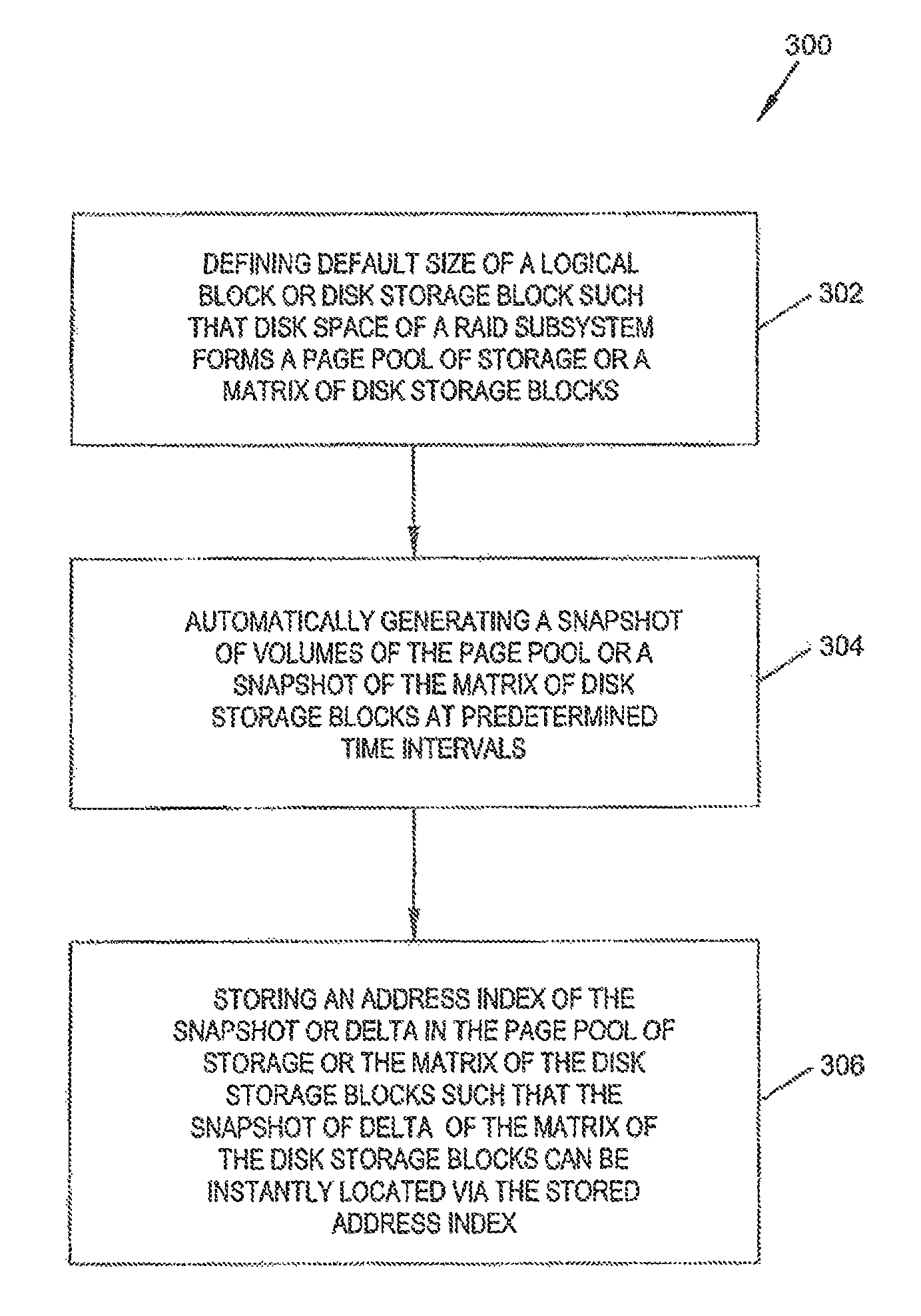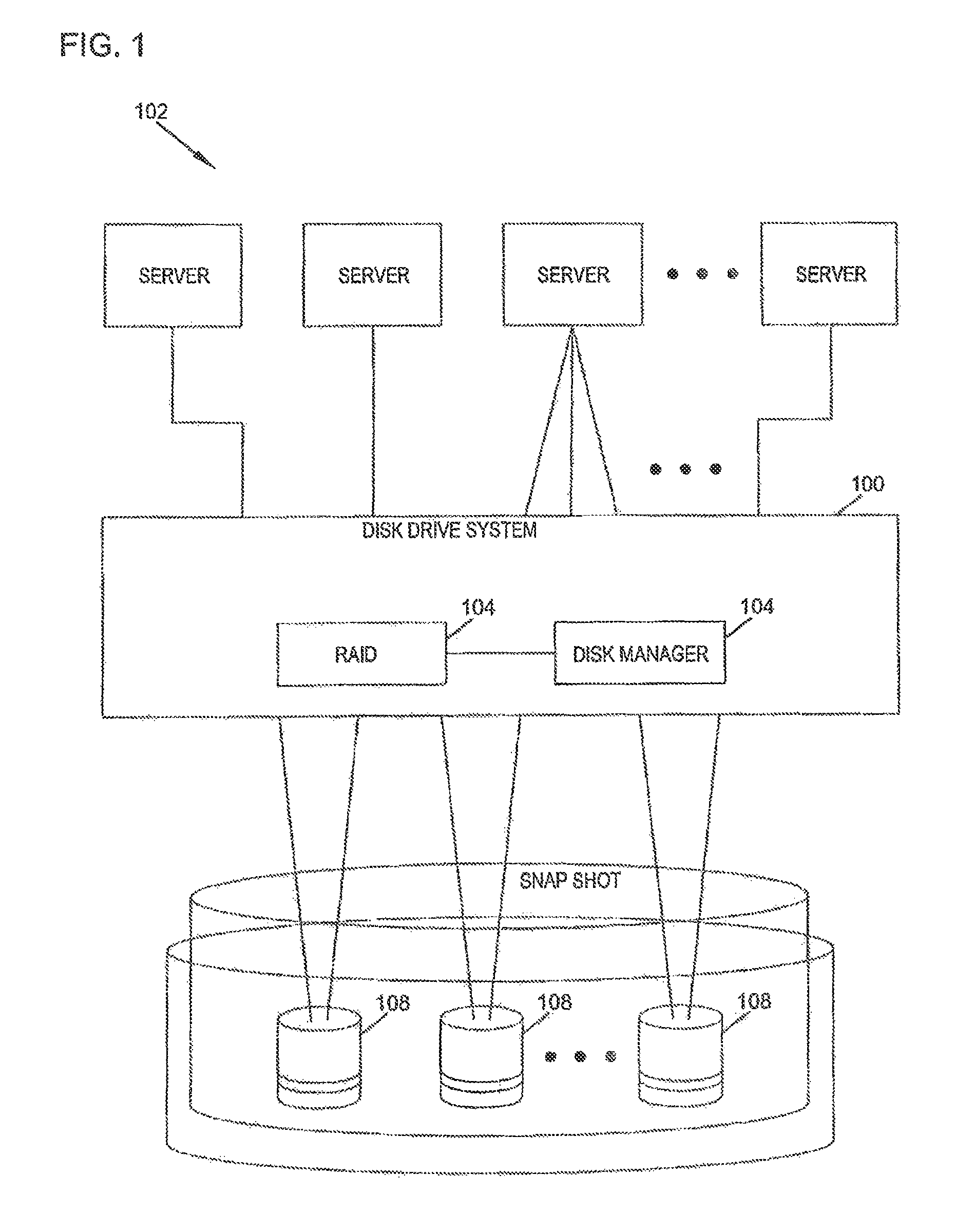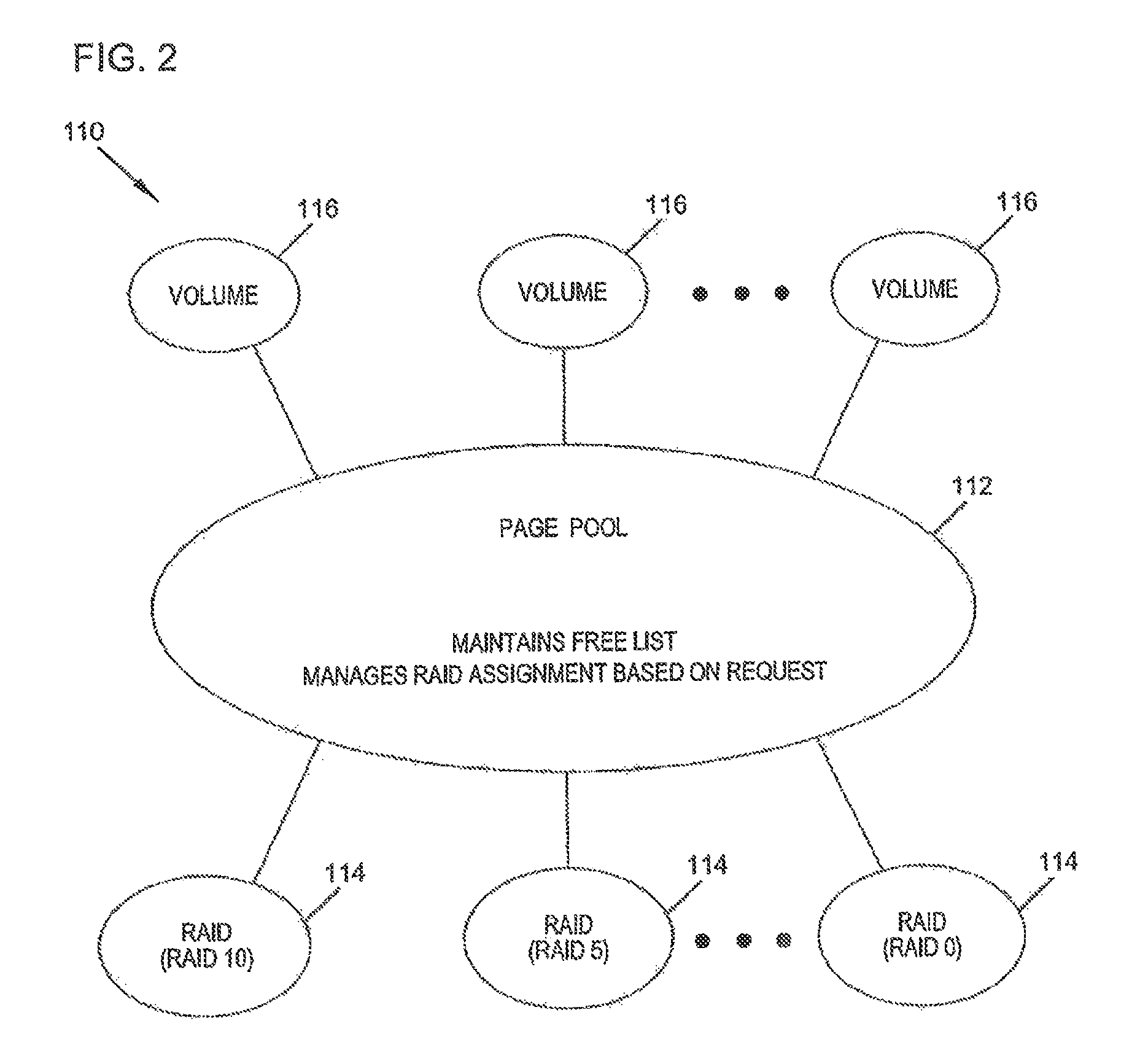System and method for transferring data between different raid data storage types for current data and replay data
a technology of raid data and storage type, applied in the direction of redundant data error correction, fault response, instruments, etc., can solve the problems of large data storage space of systems, inconvenient storage of raid data, and inability to write raid 5 raid data,
- Summary
- Abstract
- Description
- Claims
- Application Information
AI Technical Summary
Benefits of technology
Problems solved by technology
Method used
Image
Examples
Embodiment Construction
[0066]The present disclosure provides an improved disk drive system and method capable of dynamically allocating data. The disk drive system may include a RAID subsystem having a page pool of storage that maintains a free list of RAIDs or alternatively, a matrix of disk storage blocks, and a disk manager having at least one disk storage system controller. The RAID subsystem and disk manager dynamically allocate data across the page pool of storage or the matrix of disk storage blocks and a plurality of disk drives based on RAID-to-disk mapping. The RAID subsystem and disk manager determine whether additional disk drives are required, and a notification is sent if the additional disk drives are required. Dynamic data allocation allows a user to acquire a disk drive later in time when it is needed. Dynamic data allocation also allows efficient data storage of snapshots / point-in-time copies of virtual volume matrix or pool of disk storage blocks, instant data replay and data instant fu...
PUM
 Login to View More
Login to View More Abstract
Description
Claims
Application Information
 Login to View More
Login to View More - R&D
- Intellectual Property
- Life Sciences
- Materials
- Tech Scout
- Unparalleled Data Quality
- Higher Quality Content
- 60% Fewer Hallucinations
Browse by: Latest US Patents, China's latest patents, Technical Efficacy Thesaurus, Application Domain, Technology Topic, Popular Technical Reports.
© 2025 PatSnap. All rights reserved.Legal|Privacy policy|Modern Slavery Act Transparency Statement|Sitemap|About US| Contact US: help@patsnap.com



